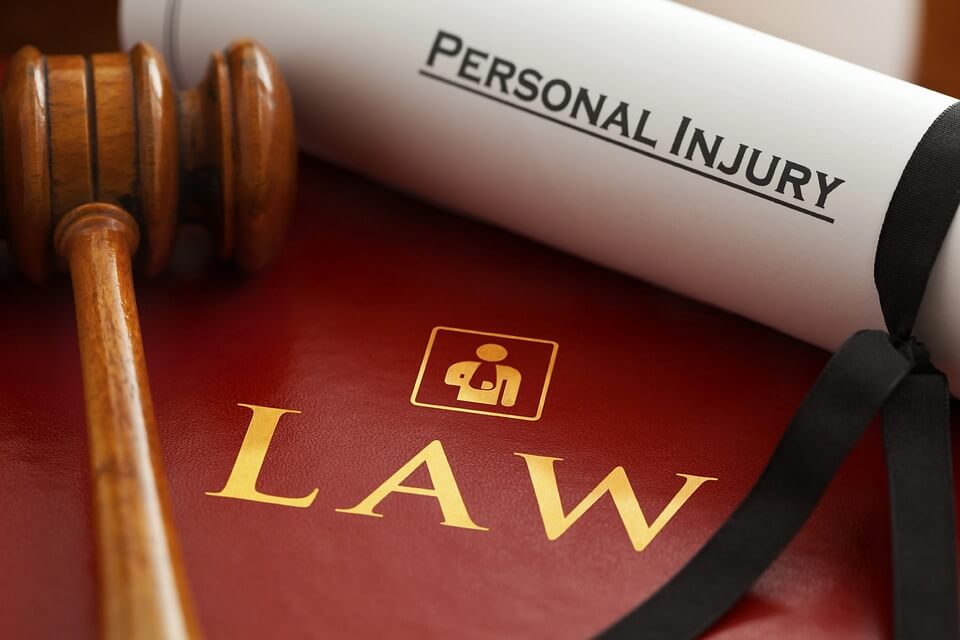
File a Personal Injury Claim and Protect Your Investments
Sustaining an injury due to someone else’s negligence can derail life both physically and financially. While holding the responsible parties liable is essential, it also poses risks to your assets. By understanding the personal injury claim process and proactive investment protection strategies, you can seek justice while safeguarding your financial future.
Navigating the Personal Injury Claim Process
In 2020, personal injury filings in the U.S. surged 97% from the previous year. This dramatic uptrend highlights the growing need to comprehend the multifaceted stages involved in mounting an effective injury claim. The process typically begins with an initial consultation with an experienced personal injury attorney like Slaughter & Lupton Law PLLC who can rigorously assess your case’s merits across factors like provable negligence, damages, and legal time limits.
If the case is strong, the lawyer then thoroughly investigates details like police reports, videos, photographs, medical records, and eyewitness testimonies to build compelling evidence. Next, a demand package listing all damages like medical bills, lost income, disability costs, pain and suffering, etc. is sent to the defendant or their insurance provider requesting justified compensation.
If the offer is unsatisfactory, the attorney then files a lawsuit initiating formal legal proceedings. Extensive information exchange called discovery then occurs under court supervision. Depositions, interrogatories, requests for documentation, medical exams, and facility inspections establish facts. Expert testimonies are also prepared. Both sides usually partake in mediation after discovery concludes to explore settlement options before proceeding to a lengthy trial.
Clearly, successfully navigating this complex sequence requires sharp legal acumen and perseverance. But preparation and resilience can lead to victories holding wrongdoers liable. Now let’s explore real-world examples of skillful legal strategy securing favorable verdicts.
Case Studies of Triumphant Personal Injury Claims
Let’s talk about some real-life cases that really made a difference. Back in 1995, there was a groundbreaking case called Walker v Northumberland County Council in the UK. It was the first time someone successfully sued their workplace for causing them stress. The trade union UNISON led the charge, and this victory set new standards for compensating employees for psychological injuries.
Then, in 2000, you might remember Erin Brockovich, the environmental activist. She took on a huge case in Hinkley, California, where 650 people were suffering from toxic chromium in their drinking water. Erin’s relentless investigation forced the big utility company PG&E to pay a whopping $333 million to settle the case. At the time, it was the biggest direct action settlement ever, showing the power of not giving up.
Jumping ahead to 2022, families of the 98 victims of the tragic Surfside, Florida residential tower collapse reached a massive $997 million settlement. This is one of the largest settlements ever for a building defect case. It goes to show that when legal teams really put their minds to it, they can win big in cases involving a lot of people.
These cases prove that when you combine solid evidence gathering, smart negotiations, a deep understanding of the legal ins and outs, and sheer determination, you can win hard-fought victories for people who’ve been hurt by negligence and injustice. Now that we’ve seen how expertly personal injury claims have been handled, let’s see some smart strategies for protecting your investments when you’re caught up in these high-stakes legal battles.
Safeguarding Assets During Personal Injury Claims
While pursuing fair compensation for losses and suffering, proactive asset protection is wise given the prospect of countersuits and the typical duration of cases. Fortunately, various mechanisms exist to legally shield investments and property.
For instance, certain tax-advantaged retirement accounts like 401(k)s and IRAs limit creditor access, thereby acting as effective shields even amidst lawsuits. Strategically funded whole life insurance policies and annuity contracts also enjoy strong protection in many states.
Transferring holdings to specialized asset protection trusts also legally keeps them safe from adverse legal judgments. These trusts, managed by independent trustees, distribute funds at their discretion while restricting creditor access.
Converting existing structures into limited liability companies (LLCs) or S-Corporations can further isolate assets from legal actions targeting individual shareholders. Consulting experienced financial and legal specialists to develop a customized asset protection blueprint catered to your unique needs and holdings is crucial.
An intelligently orchestrated mix of tools can help prudently secure wealth during turbulent times. Looking ahead, evolving socioeconomic trends will likely shape personal injury legal landscapes and asset protection strategies for years to come.
The Road Ahead for Injury Claims and Protection Planning
Looking into the future, it seems that the cost of dealing with injury claims is going to keep going up in 2023 and beyond. There are a bunch of reasons for this, like prices going up due to inflation, people getting paid more, but also having a harder time finding workers, and medical tech getting better, which means higher compensation. On top of that, lawyers are getting more aggressive in their tactics. Specialized plaintiff attorneys and financial support for litigation are also on the rise.
To deal with this ever-more challenging claims landscape, it looks like there might be a growing demand for creative solutions like offshore asset protection trusts. These trusts in places like the Cook Islands, Nevis, and the Cayman Islands could become more popular. Plus, with the rise of cryptocurrency and digital assets, protecting your wealth overseas might be a good idea since they’re decentralized and harder to track.
But, even as times change, some things stay the same. Building solid cases, being tough negotiators, and actively protecting your assets are still key strategies. It’s a good idea to keep an eye on the trends that favor plaintiffs, but sticking to tried-and-true methods is still the foundation for finding justice and financial stability.
Frequently Asked Questions
What is the role of an attorney in a personal injury claim?
A personal injury attorney guides through legal intricacies, gathers evidence, arranges witnesses, files paperwork, negotiates settlements, and advocates on your behalf in and out of court. Their expertise significantly improves the odds of success.
How can I safeguard assets from lawsuits or creditors?
Strategies include retirement accounts, asset protection trusts, LLCs, life insurance, annuities, and offshore holdings. A diversified approach utilizing multiple protective tools crafted for your profile offers optimal risk coverage.
What are examples of successful investment protection strategies during claims?
Documented case studies show transferring assets to protective trusts, obtaining litigation insurance, and forming LLCs effectively shielded wealth during settlements. Proactive planning is key.
Final Thoughts
Suffering any injury can be severely life-altering on many fronts. For deserving plaintiffs, receiving fair compensation requires steely determination, legal mastery, and financial prudence. Yet with contemporary tools and strategies, it is possible to both achieve justice and financial security by intimately understanding the nuances of claim processes, leveraging instructive case precedents, and proactively future-proofing assets. With the right legal guidance and financial arrangements, progress on both mission-critical fronts is attainable. Justice and protection can coexist.






